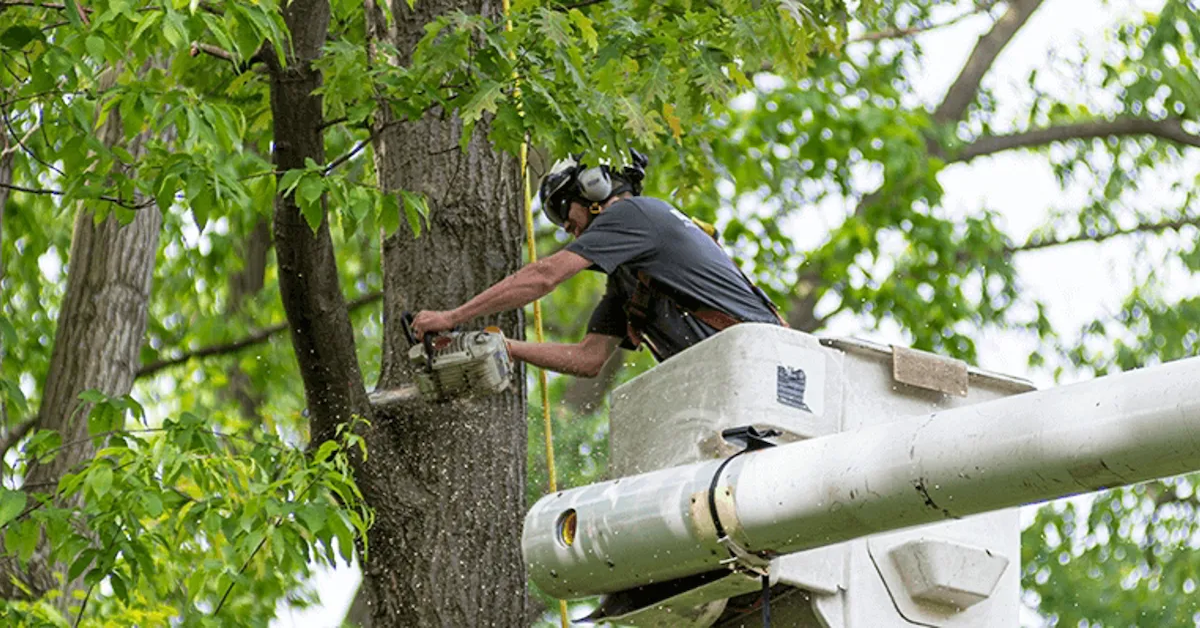What Equipment Is Used for Tree Removal Service?
Removing a tree might seem straightforward, but there’s a lot more to it than grabbing a chainsaw and getting to work. Safe and efficient tree removal takes the right equipment, careful planning, and experienced hands. Whether the tree is leaning too close to a house, damaged from a storm, or simply too old to stand strong, knowing what tools are involved can help you understand the process and why it’s best left to the pros.
Let’s walk through the key equipment used in a typical tree removal job and what each tool is responsible for.
Chainsaws: The Go-To Cutting Tool
Chainsaws are the heart of almost every tree removal project. They come in different sizes depending on the type and thickness of the tree. For smaller trees or limbs, a lightweight chainsaw might do the trick. For thicker trunks and heavy branches, we bring out the big ones with longer bars and stronger motors.
But it’s not just about power. Skilled operators know how to cut in a way that controls how and where the tree falls, which is essential for safety. That’s why we always inspect the tree first to decide the right size and type of chainsaw to use.
Climbing Gear: For Trees in Tight Spots
Not every tree can be accessed by a machine. Some are surrounded by fences, wires, or other obstacles. In these cases, tree climbers gear up with safety harnesses, ropes, saddles, and spikes to scale the tree and take it down piece by piece.
Climbers often remove branches first, carefully lowering each one with ropes to avoid damage. Then the trunk is cut down in manageable sections. It’s a precise job that takes skill and balance.
Cranes and Lifts: For Larger or Risky Trees
When a tree is too big to remove safely from the ground—or if it’s located near buildings or power lines—a crane may be brought in. Cranes allow us to lift sections of the tree up and away instead of letting them fall.
Using a crane minimizes risk and speeds up the process, especially for tall or decaying trees that can’t be safely climbed. In other cases, we might use an aerial lift (also called a bucket truck) to reach high branches without climbing.
Wood Chippers: Clean-Up Made Easy
Once a tree is cut down, there’s a lot of wood to deal with. That’s where wood chippers come in. These machines take large branches and trunk sections and grind them into mulch. This not only makes disposal easier but also leaves behind usable material that can go back into your landscaping or be hauled away.
Wood chippers come in various sizes depending on the amount of debris. Some are tow-behind models for residential jobs, while others are large, truck-mounted machines for bigger removals.
Stump Grinders: Don’t Forget the Base
Removing the tree is only part of the process. What’s left behind is the stump, which can be an eyesore and a hazard. Stump grinders are used to break down the remaining base of the tree below ground level.
These machines have a rotating blade that shaves down the stump until it’s level with the ground or below. It’s a cleaner finish and gives you more options for replanting or regrading the area.
Protective Equipment: Safety First
All of our crew members wear proper safety gear on every job. That includes helmets, eye and ear protection, chainsaw chaps, gloves, and steel-toe boots. Tree removal is dangerous work, and having the right safety gear is just as important as the machines we use.
We also set up cones, warning signs, and barriers if we’re working near driveways or roads. Keeping the site secure protects both workers and anyone nearby.
Hauling Equipment: Getting Everything Offsite
After cutting, chipping, and grinding, we still need to haul everything away. Dump trailers, log loaders, and flatbed trucks help move logs, mulch, and debris off your property. This ensures that your yard is left clean and clear, with no mess left behind.
Why the Right Tools Matter
Every tree and every yard is different. Using the right equipment helps get the job done faster and safer. It also reduces the risk of damaging nearby structures, lawns, or underground utilities. That’s why we always inspect the area first and make a plan based on the specific tree and location.
Conclusion
Tree removal might seem like a simple cut-and-drop process, but there’s a lot that goes into it behind the scenes. From chainsaws and chippers to cranes and grinders, every tool plays a role in making the job safe, efficient, and clean.
At Sawvell Tree Service, we use professional-grade equipment and proven techniques to handle every tree with care. Whether you need a single tree removed or have a larger project in mind, we’ve got the tools and experience to make sure it’s done right from start to finish.


